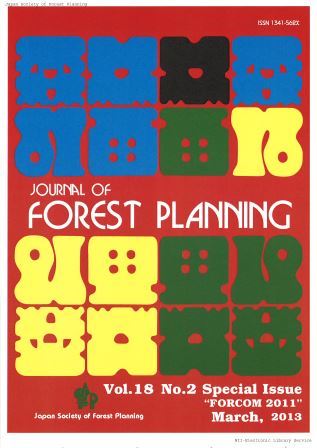Volume 18, Issue 2
Displaying 1-14 of 14 articles from this issue
- |<
- <
- 1
- >
- >|
-
Article type: Appendix
2013 Volume 18 Issue 2 Pages App1-
Published: 2013
Released on J-STAGE: November 01, 2017
Download PDF (63K) -
Article type: Appendix
2013 Volume 18 Issue 2 Pages App2-
Published: 2013
Released on J-STAGE: November 01, 2017
Download PDF (62K) -
Article type: Index
2013 Volume 18 Issue 2 Pages Toc1-
Published: 2013
Released on J-STAGE: November 01, 2017
Download PDF (68K) -
Article type: Article
2013 Volume 18 Issue 2 Pages 87-
Published: 2013
Released on J-STAGE: September 01, 2017
Download PDF (72K) -
Article type: Appendix
2013 Volume 18 Issue 2 Pages 89-
Published: 2013
Released on J-STAGE: September 01, 2017
Download PDF (22K) -
Article type: Article
2013 Volume 18 Issue 2 Pages 91-98
Published: 2013
Released on J-STAGE: September 01, 2017
Download PDF (1143K) -
Article type: Article
2013 Volume 18 Issue 2 Pages 99-104
Published: 2013
Released on J-STAGE: September 01, 2017
Download PDF (896K) -
Article type: Article
2013 Volume 18 Issue 2 Pages 105-110
Published: 2013
Released on J-STAGE: September 01, 2017
Download PDF (835K) -
Article type: Article
2013 Volume 18 Issue 2 Pages 111-116
Published: 2013
Released on J-STAGE: September 01, 2017
Download PDF (732K) -
Article type: Article
2013 Volume 18 Issue 2 Pages 117-126
Published: 2013
Released on J-STAGE: September 01, 2017
Download PDF (1945K) -
Article type: Article
2013 Volume 18 Issue 2 Pages 127-134
Published: 2013
Released on J-STAGE: September 01, 2017
Download PDF (1497K) -
Article type: Article
2013 Volume 18 Issue 2 Pages 135-140
Published: 2013
Released on J-STAGE: September 01, 2017
Download PDF (752K) -
Article type: Article
2013 Volume 18 Issue 2 Pages 141-150
Published: 2013
Released on J-STAGE: September 01, 2017
Download PDF (1269K) -
Article type: Article
2013 Volume 18 Issue 2 Pages 151-156
Published: 2013
Released on J-STAGE: September 01, 2017
Download PDF (909K)
- |<
- <
- 1
- >
- >|
